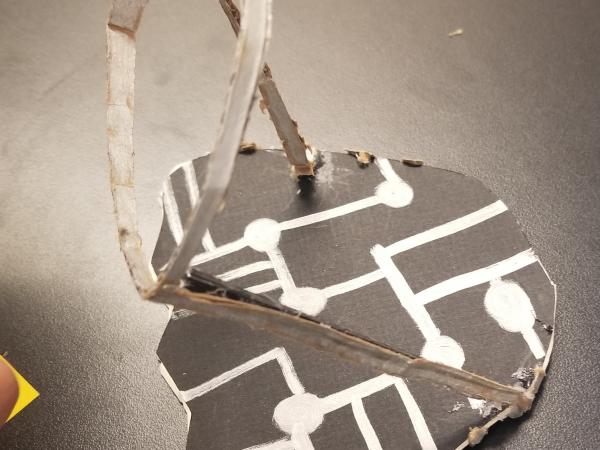In this project, students explore 8th-grade science concepts involving adaptations.
We will discuss as a class how the environment is changing and what adaptations or inventions may be needed in the future. Students will consider issues like forest fires, rising temperatures, clean water, pollution, the food supply chain, etc. They will then sculpt a model of their invention or adaptation. Students will use materials like cardboard, paperboard, plastic containers and lids to construct their models. Students will learn to translate their 2D sketch into a 3D model.
Objectives:
- Students will brainstorm at least three different ideas of possible adaptations or inventions that could help humans in the future
- Students will determine which idea they will pursue
- Students will fully draw their idea from two different angles to get a better understanding of the objects full form (translation from 2D to 3D).
- Students will sculpt a 3D model of their adaptation.
- Students will write a three-to-four sentence statement about their artwork
Basic Lesson Outline:
- Introduce the project and share slideshow.
- Students will determine their adaptation/invention and draw it from two different angles to better understand its form (translate from 2D to 3D)
- Students will begin sculpting their idea
- Students finalize their sculptures
- Students display their work and artist statement, give feedback and discuss
Art Supplies:
- extra blank paper for drawing idea from two angles
- pencils and erasers
- scissors
- Xacto knives
- cardboard pieces and paperboard pieces
- masking tape/duct tape
- cardboard tape and sponges
- hot glue sticks and gun
- (encourage students to bring items from home to add to the supplies)
Other Resources:
PowerPoint slideshow
Brainstorming worksheet
Final drawing worksheet
Idaho State Learning Standards:
Arts and Humanities: Anchor Standard 1: Generate and conceptualize artistic ideas and work.
- VA:Cr1.1.8a: Document early stages of the creative process visually and/or verbally in traditional or new media.
Arts and Humanities: Anchor Standard 2: Organize and develop artistic ideas and work.
- VA:Cr2.1.8a: Demonstrate willingness to experiment, innovate, and take risks to pursue ideas, forms, and meanings that emerge in the process of artmaking or designing.
Science Objective(s):
- MS-LS2-4. Construct an argument supported by empirical evidence that changes to physical or biological components of an ecosystem affect populations.
- MS-LS2-1. Analyze and interpret data to provide evidence for the effects of resource availability on organisms and populations of organisms in an ecosystem.
- MS-LS2-5. Evaluate competing design solutions for maintaining biodiversity and ecosystem services.
Academic Language:
- Subject area language: adaptation, invention, environment, observation
- Art Language: sculpture, form, 2D, 3D, model
Student Use of Vocabulary:
Students will use the words when creating their sculptures, when writing about their work, and when discussing their projects.
Student Grouping:
Students will work independently.

0 comentarios
Leave a Comment